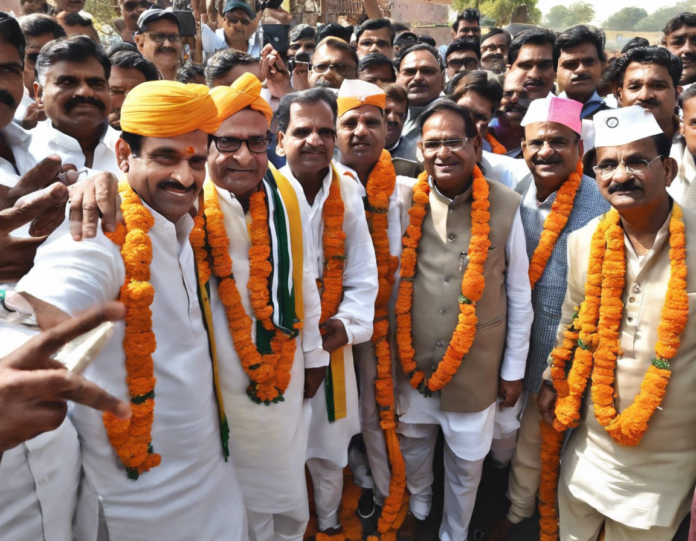Understanding Madhya Pradesh Elections: A Comprehensive Overview
Madhya Pradesh, located in central India, has been a political battleground for decades. With its rich cultural heritage, historical significance, and diverse population, the state plays a crucial role in shaping the political landscape of the country. In this blog post, we will delve into the various facets of Madhya Pradesh elections, including the recent trends, key players, and the issues that have dominated the electoral narrative in the state.
Historical Context and Political Landscape
Madhya Pradesh has a long history of political significance, being a stronghold of the Congress party for many years. The state has also seen the rise of regional parties like the Bharatiya Janata Party (BJP), which have challenged the dominance of the Congress in recent decades. The political landscape in Madhya Pradesh is characterized by a complex interplay of caste dynamics, regional identities, and socio-economic factors that influence electoral outcomes.
Recent Trends and Results
In the last few decades, Madhya Pradesh has witnessed closely contested elections between the Congress and the BJP. The state assembly elections in 2018 were a watershed moment, with the Congress emerging as the single largest party but falling short of a majority. The BJP, on the other hand, put up a strong fight and managed to secure a significant number of seats in the assembly.
Key Players
The political dynamics in Madhya Pradesh are shaped by a diverse group of leaders who represent various caste and community interests. Some of the key players in the state’s political landscape include Chief Minister Shivraj Singh Chouhan from the BJP, former Chief Minister Kamal Nath from the Congress, and regional leaders like Jyotiraditya Scindia who have a significant influence on the electoral outcomes in the state.
Major Issues and Electoral Narrative
Several issues have dominated the electoral narrative in Madhya Pradesh, including agricultural distress, unemployment, infrastructure development, and social welfare programs. The state’s vast rural population is particularly concerned about agricultural policies and schemes that can improve their livelihoods. Unemployment is also a major issue, especially among the youth, who are looking for opportunities to secure a better future.
Challenges and Opportunities
Madhya Pradesh faces several challenges in terms of governance, economic development, and social welfare. The state has immense potential for growth, given its rich natural resources, skilled workforce, and strategic location. However, political instability, corruption, and bureaucratic hurdles have hindered the state’s progress in recent years. The upcoming elections present an opportunity for the state to elect a government that can address these challenges and unlock its full potential.
Frequently Asked Questions (FAQs)
1. When are the next assembly elections scheduled to take place in Madhya Pradesh?
The next assembly elections in Madhya Pradesh are scheduled for 2023, as the term of the current government ends in January 2023.
2. What are the major political parties active in Madhya Pradesh?
The major political parties in Madhya Pradesh are the Indian National Congress (INC) and the Bharatiya Janata Party (BJP), along with other regional parties and independent candidates.
3. What are the key issues that are likely to influence the outcome of the next elections in Madhya Pradesh?
Some of the key issues that are likely to influence the outcome of the next elections in Madhya Pradesh include agricultural distress, unemployment, infrastructure development, and social welfare programs.
4. Who are some of the prominent political leaders in Madhya Pradesh?
Prominent political leaders in Madhya Pradesh include Chief Minister Shivraj Singh Chouhan from the BJP, former Chief Minister Kamal Nath from the Congress, and Jyotiraditya Scindia among others.
5. What role do regional parties play in Madhya Pradesh elections?
Regional parties like the Bahujan Samaj Party (BSP) and the Samajwadi Party (SP) have a limited presence in Madhya Pradesh but can play a crucial role in coalition politics and seat-sharing arrangements.
In conclusion, Madhya Pradesh elections are a reflection of the state’s vibrant political landscape, marked by a complex interplay of regional, caste, and socio-economic factors. The upcoming elections present an opportunity for the state to chart a new course towards development and progress by electing a government that can address the pressing issues and challenges faced by its people.








